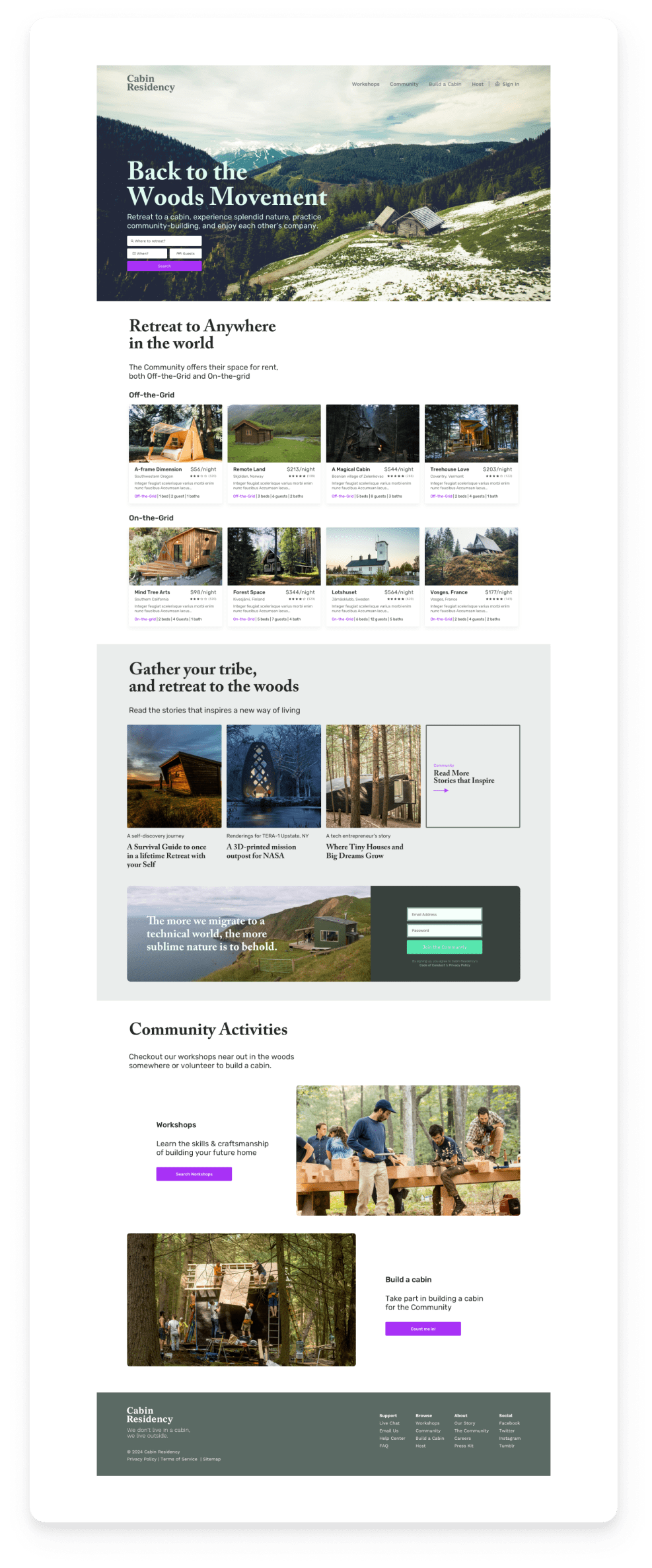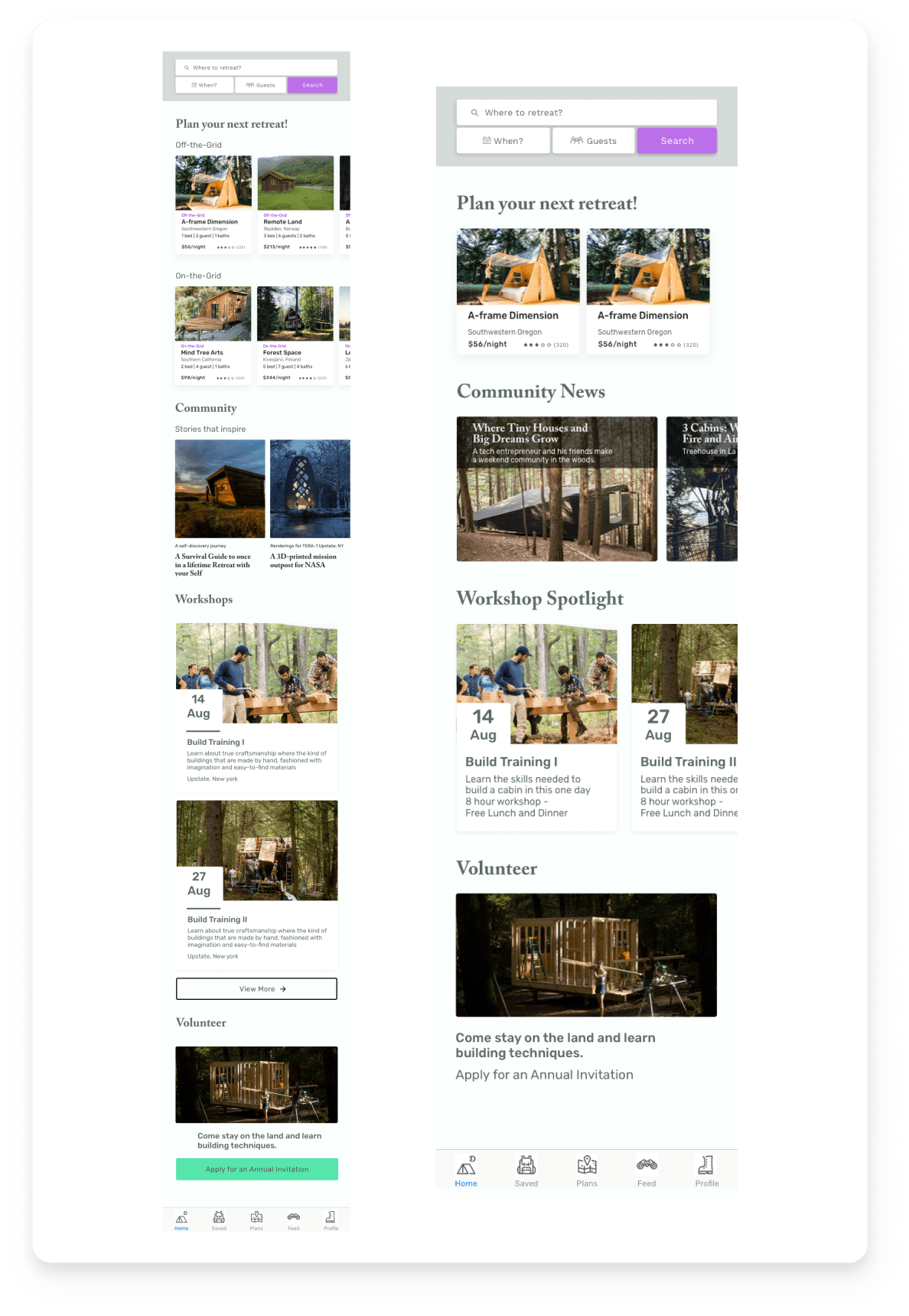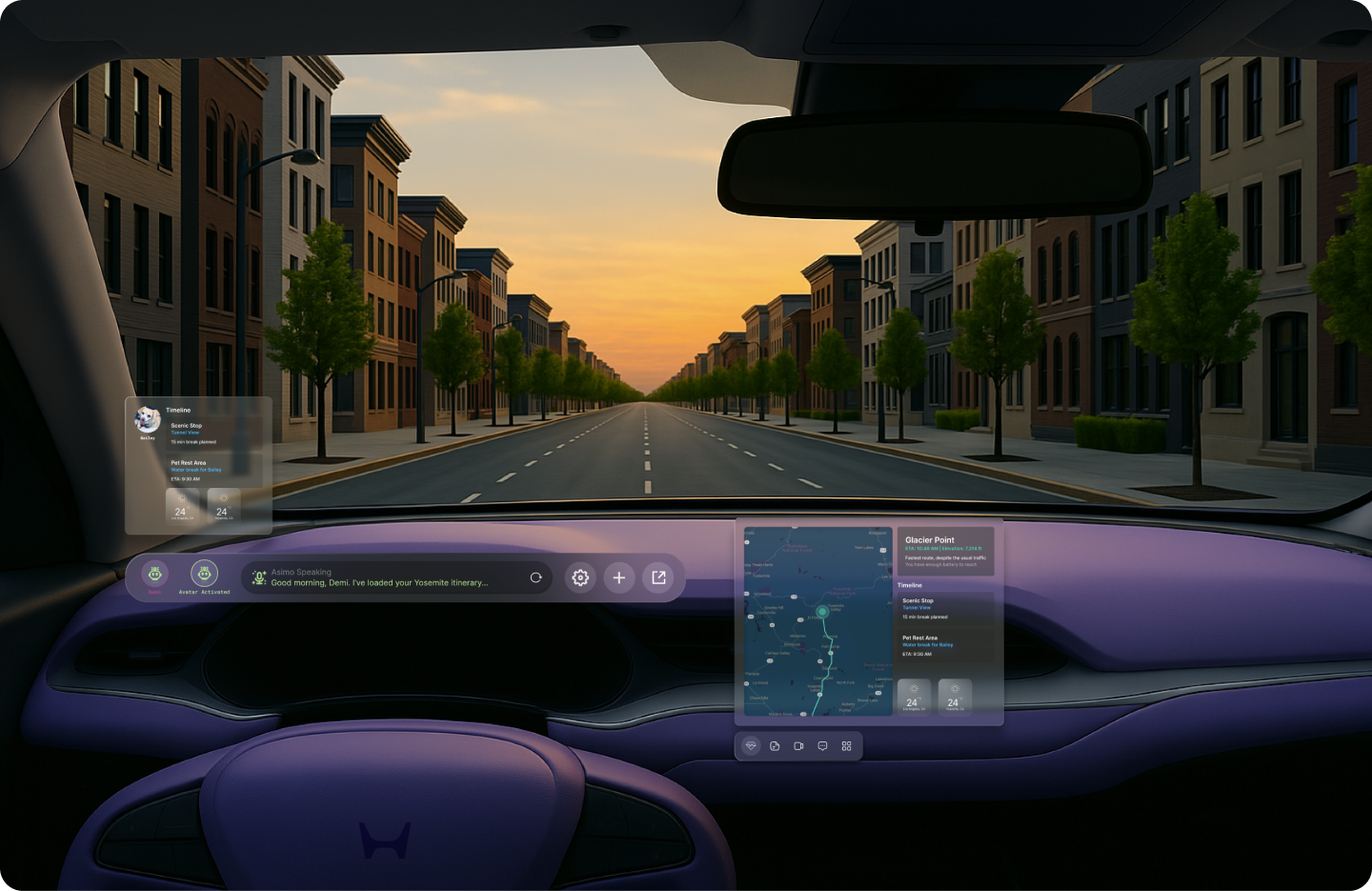
Cabin Residency
Overview
Cabin Residency is a concept project inspired by a book called, Cabin Porn; which is an online community that started off on Tumblr by sharing photos of unique and stunning cabins built by people around the world. The movement is essentially about taking a break from the everyday fast-paced lifestyle to go back to the basics and to what matters most for the person or community.
The goal for the project was to design a booking website for a niche community of cabin-enthusiasts and outdoor explorers. For people who want to experience living in a cabin in the middle of nowhere, off-the-grid or on-the-grid; But mainly to bring the cabin-building community together to share their homes and to teach others the skills of building their own cabins.
Tools Used:
Sketch, Illustrator CC, Framer X
Methods:
Research, User Research, Moodboard, Personas, Userflows, Sketches, Prototype
Preliminary Reseach
Most of my research was based on certain sections of the book, their Tumblr page, and article interviews with the founder. This helped to get the gist of their ethos and direction for the prototype.
The personas were based around the observations I got from my research and also from Instagram profiles; by querying tags such as #cabinlife or #cabin and looking for commonality in the likely users for Cabin Residency.

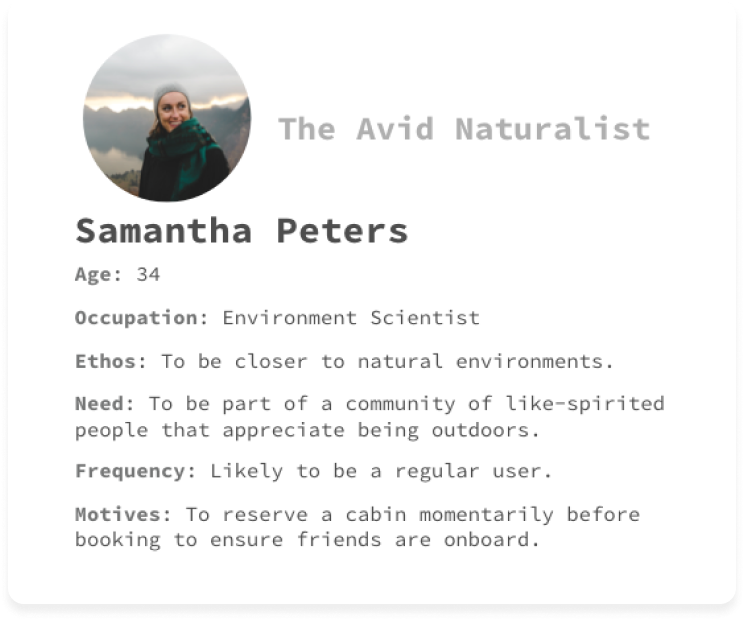

Problem
Cabin Residency solves the problem of accessibility and community for cabin enthusiasts by creating a platform that connects travelers, builders, and nature lovers around authentic cabin living.
Modern life often feels overwhelming, fast-paced, and disconnected from nature. People who dream of escaping to a cabin in the woods, living more simply, or experiencing off-the-grid lifestyles don’t have an easy way to access these experiences. At the same time, the community of cabin builders and enthusiasts is fragmented, there isn’t a centralized space for them to share homes, knowledge, or opportunities.
How Cabin Residency Addresses This:
- Accessibility to Cabin Living: It creates a booking platform for people who want to experience cabin life without the barrier of building one themselves. This makes the lifestyle more approachable for travelers and explorers.
- Community & Knowledge Sharing: It provides a hub for cabin-builders to connect, share their projects, and teach others the skills of building and maintaining cabins.
- Connection to Nature & Simplicity: It supports people seeking a retreat from urban life, offering them a way to reset and reconnect with what matters most.
- Niche Market Solution: It fills the gap between typical vacation rental platforms (like Airbnb) and the unique desire for authentic, off-the-grid, cabin-focused experiences.

Userflows
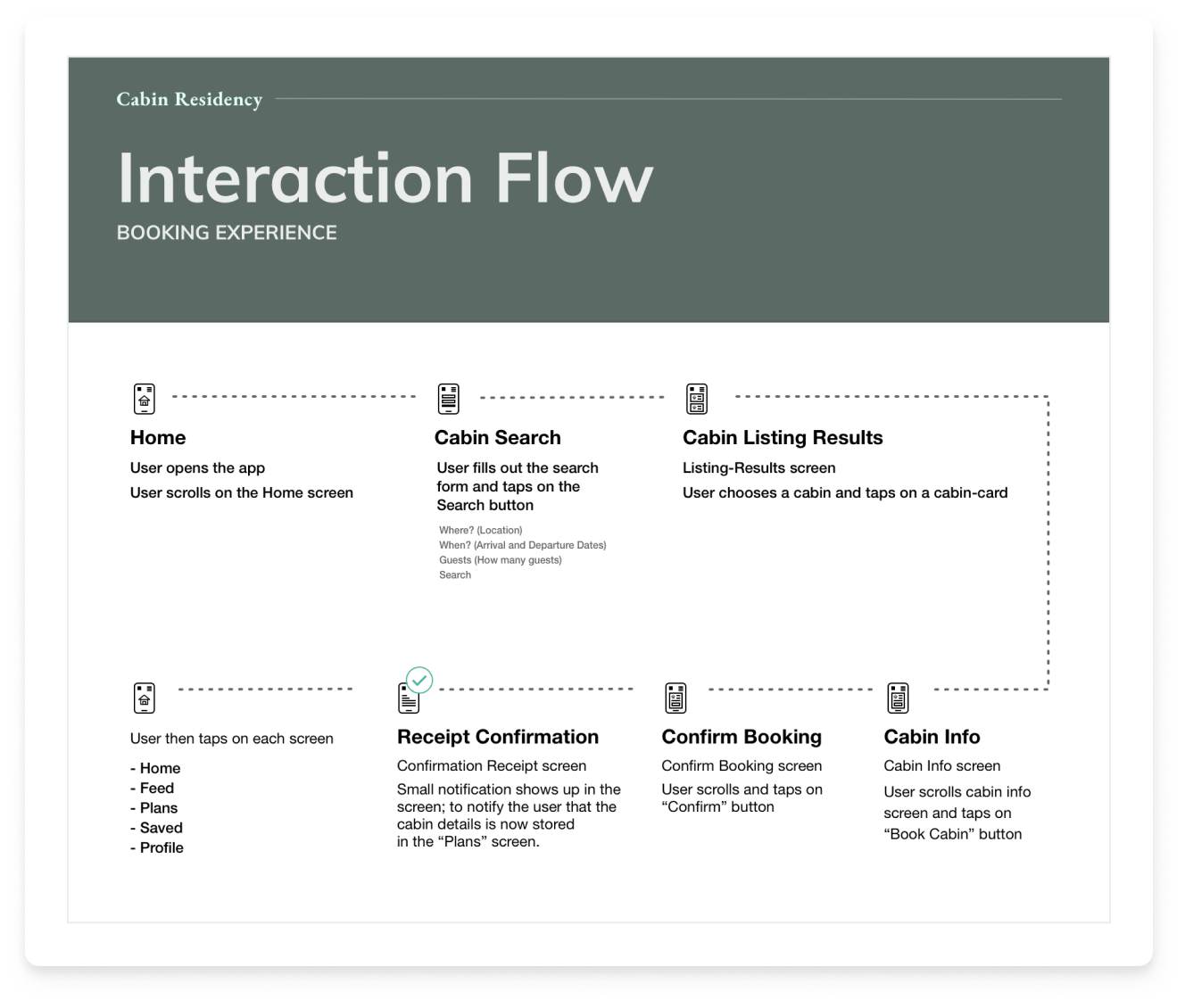
Synthesis
Wireframes
After collecting and strategizing the content, I began sketching out the ideas for the branding and the layout for the UI. I created a rapid branding identity that best suited Cabin Residency.
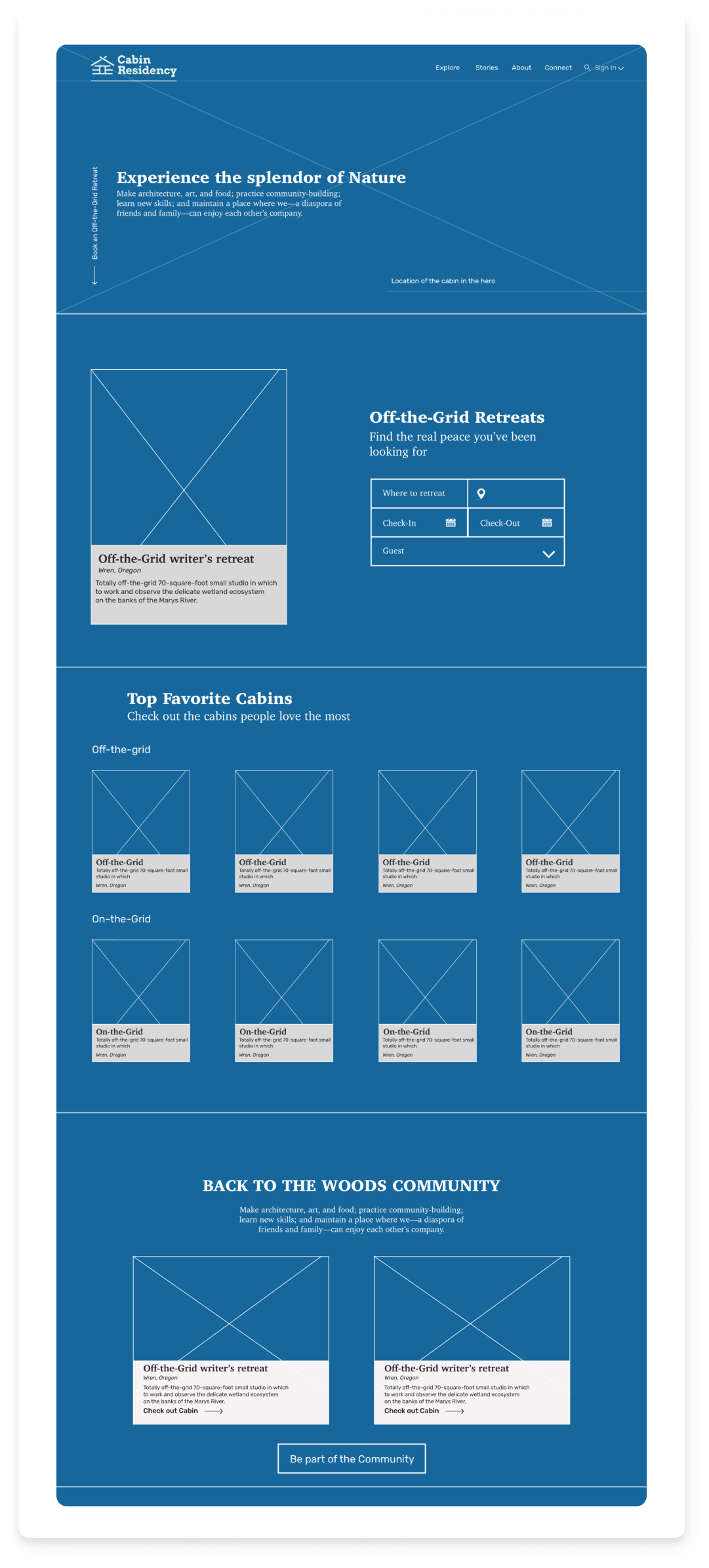

Design
Branding & UI
The branding for Cabin Residency was aimed to keep it close to feeling naturalistic and with a sense of taking action to experience it.
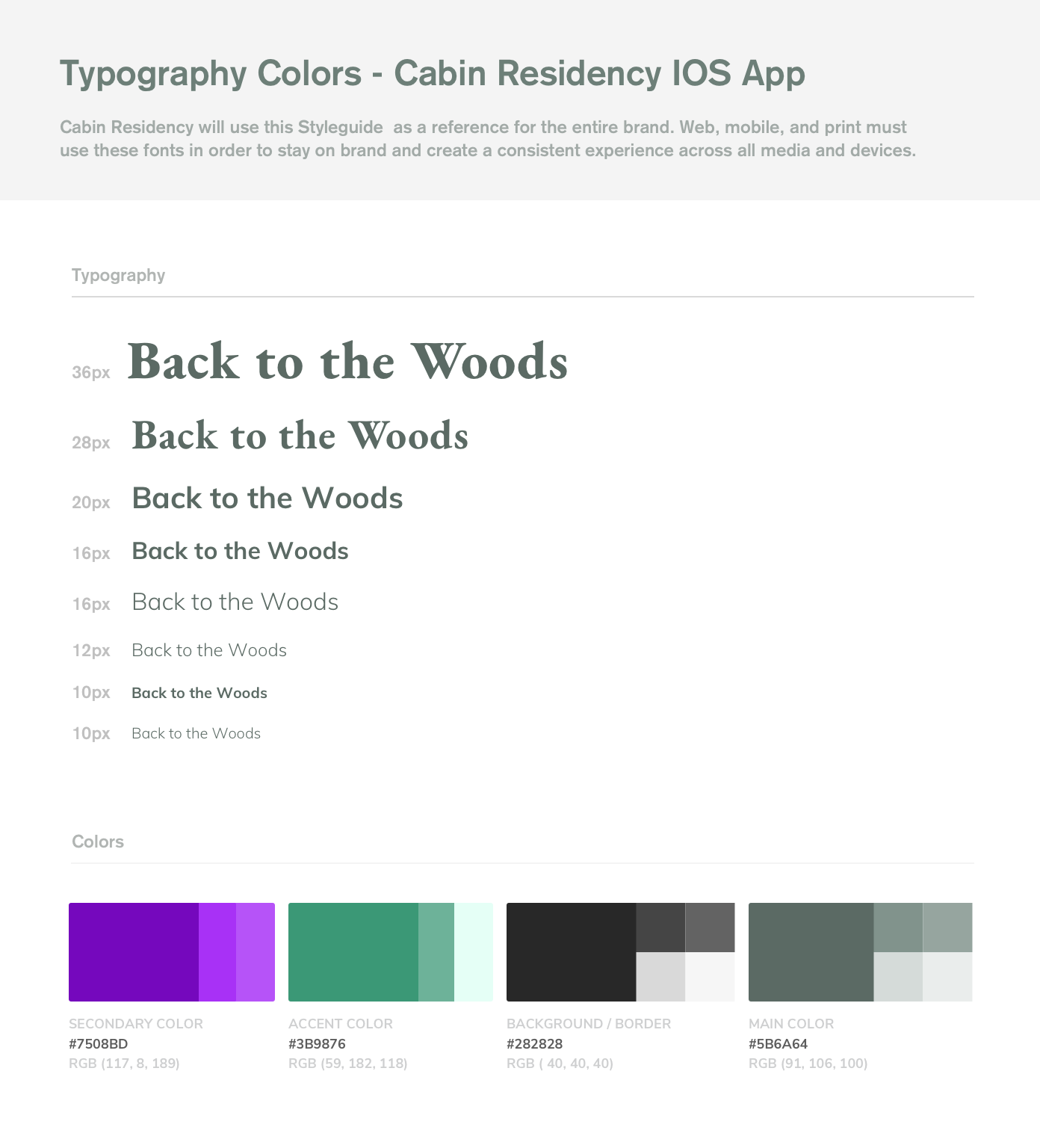
Outcome
To conclude for now, the idea of Cabin Residency is building a community for the real outdoors and to learn from each other in being more self-sufficient.Next steps: Will be to test the prototype with some possible users and iterate the design from the feedback.
